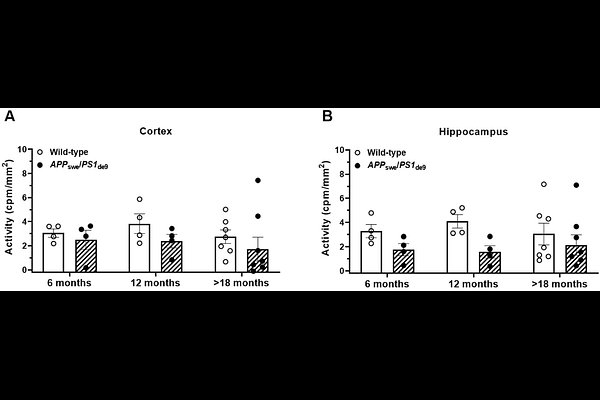Serotonin-2B receptor (5-HT2BR) expression and binding in the brain of ageing APPswe/PS1de9 transgenic mice and in human Alzheimer's disease brain tissue

Serotonin-2B receptor (5-HT2BR) expression and binding in the brain of ageing APPswe/PS1de9 transgenic mice and in human Alzheimer's disease brain tissue
Anzalone, M.; Karam, S. A.; Briting, S. R.; Petersen, S.; Thomsen, M. B.; Landau, A. M.; Finsen, B.; Metaxas, A.
AbstractAlthough evidence of dysregulation in central serotonergic signalling is widespread in Alzheimer\'s disease (AD), relatively little is known about the specific involvement of the serotonin-2B receptor (5-HT2BR) subtype. Here, we assessed 5-HT2BR expression and binding in brain tissue from APPswe/PS1dE9 transgenic (TG) mice and AD patients. 5-HT2BR mRNA was measured by RT-qPCR in 3- to >18-month-old TG and wild-type (WT) littermate mice (n=3-8), and in middle frontal gyrus samples from female, AD and control subjects (n=7-10). The density of 5-HT2BRs was measured by autoradiography using 1 nM [3H]RS127445 and 1 M LY266097. In both mouse and human samples, 5-HT2BR mRNA was detectable after 33 amplification cycles. mRNA levels in WT mice, not TG mice, increased with age, and were higher in AD patients compared to control subjects. [3H]RS127445 binding was low in the mouse brain, detected after 3 months of age. 5-HT2BR density was overall lower in the hippocampus of TG compared to WT mice. Specific binding was too low to be reliably quantified in the human samples. These data provide evidence of a different 5-HT2BR expression and binding in the APPswe/PS1dE9 TG model of AD and AD patients. Studies investigating the functional involvement of the 5-HT2BR in AD are warranted.